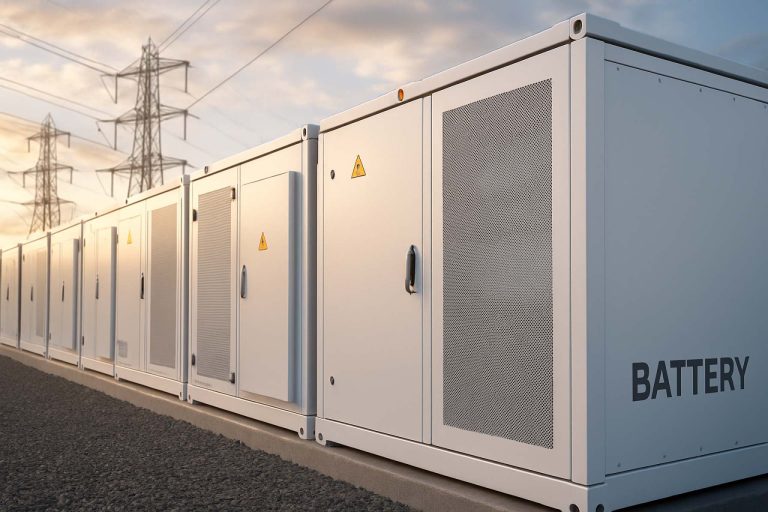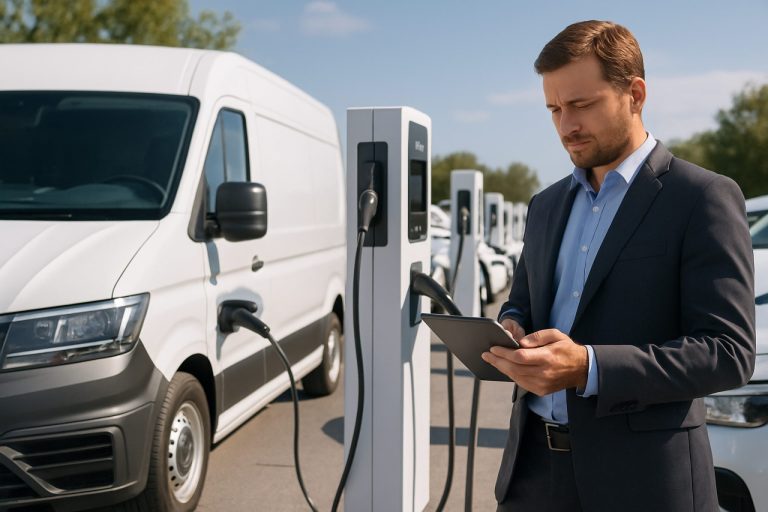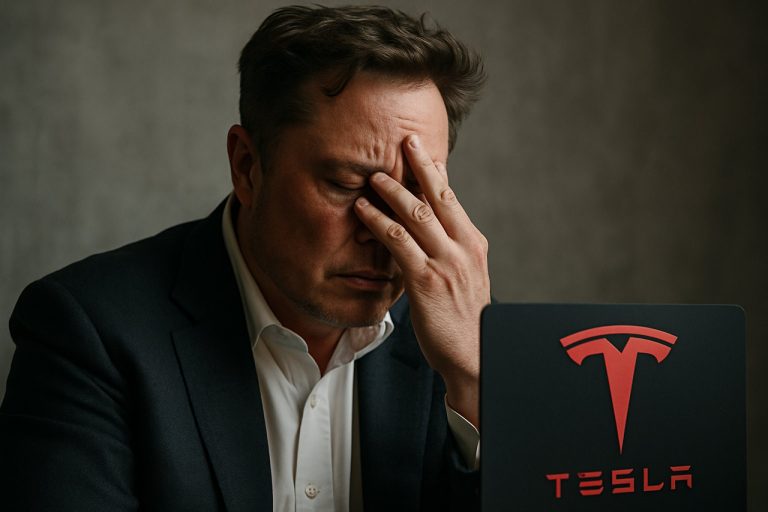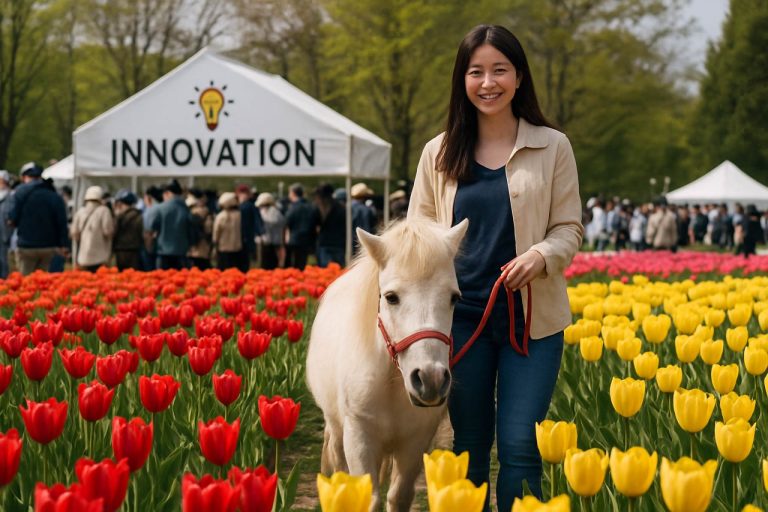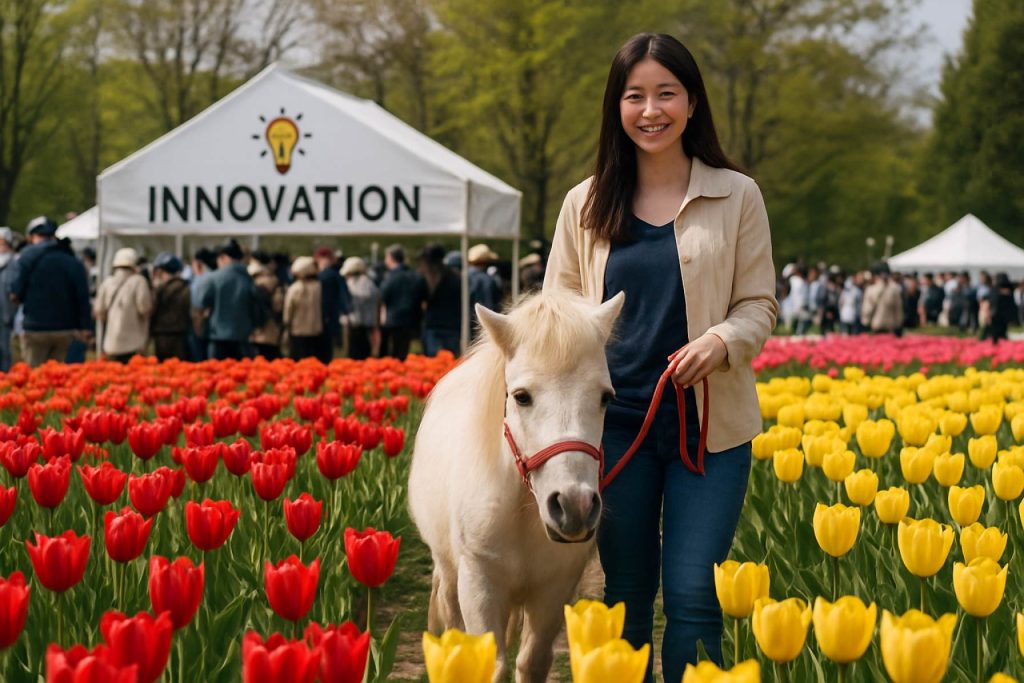
- The Kushiro Tulip & Flower Fair showcased a blend of tradition and innovation with thousands of tulips and new sustainability efforts.
- A highlight was a flower carriage illuminated by repurposed electric vehicle (EV) batteries, demonstrating creative reuse and eco-friendly technology.
- Using used EV batteries reduced the fair’s carbon footprint and offered a practical example of renewable energy solutions at public events.
- Despite rainy weather, festivities adapted by moving stage events indoors and ensuring traditions like the Mini 4WD Tulip Grand Prix continued.
- The event emphasized how small, innovative choices—like upcycling batteries—can inspire community-wide sustainability and connect people of all ages.
Pink and golden tulip petals rippled in the brisk northern breeze, forming a vibrant carpet across Kushiro’s Tsurugaoka Park. This scene—an explosion of color, laughter, and the gentle clopping of hooves—marked the heart of Hokkaido’s spring as the 51st Kushiro Tulip & Flower Fair burst to life on May 24.
Crowds strolled the tangled pathways, cameras raised to capture more than just flowers: a new era of creativity and sustainability took root this year. Among endless rows of fragile blossoms, a flower carriage emerged, decked in botanical finery and drawn by a pony, but with a silent force powering its nightly illumination. Instead of relying on standard electricity, this floral chariot ran on the repurposed heart of modern transport—used electric vehicle batteries.
The spectacle fused charm and technology: as the sun dipped beneath the horizon, thousands watched soft lights twinkle quietly from the carriage, all thanks to the energy salvaged from batteries typically destined for landfills. This single act offered a living demonstration of how discarded technology can be harnessed to reduce carbon footprints at even the most traditional of gatherings. For many, the notion of ponies and EV battery-powered lanterns sharing the same stage seemed as surprising as it was hopeful.
Beyond the flowerbeds, the fair pulsed with life. Visitors young and old crowded beneath fluttering banners, savoring a seasonal rite that locals have cherished for over half a century. Rainy forecasts nudged some stage events indoors—including to the local budokan, where music and performance continued undeterred. The famed Mini 4WD Tulip Grand Prix shifted venues, ensuring the spirit of competition—and the whirring of tiny engines—could go on regardless of Hokkaido’s unpredictable weather.
Each year, the fair’s traditions remind citizens how nature and innovation intertwine in unexpected ways. Hokkaido’s legacy of celebrating renewal, both in flowers and in ideas, continued to draw families, technology enthusiasts, and conservationists together. The message struck home: small choices—such as giving batteries a second life—can light up a city, enliven a festival, and inspire a new kind of bloom.
To stay updated on stories that blend the past and the future, visit FNN News. Hokkaido’s spring display this year wasn’t only about flowers; it was about cultivating a sustainable way forward—one petal, one spark of innovation, and one illuminated carriage at a time.
Kushiro’s Tulip Fair: How Second-Life EV Batteries and Heritage Blooms Are Shaping Hokkaido’s Green Future
Exploring the Hidden Innovations Powering Hokkaido’s Beloved Spring Festival
The Kushiro Tulip & Flower Fair isn’t just Hokkaido’s annual feast for the senses; in 2024, it became a living lab for sustainability, creative tech, and eco-civic pride. While the vivid tulip displays and fairground festivities receive much fanfare, let’s dig deeper into the cutting-edge energy solutions, practical life hacks, and lasting impact that set this year’s jubilee apart.
—
Additional Verified Facts:
1. Second-Life EV Batteries: A Real-World Circular Economy Solution
– Repurposing electric vehicle (EV) batteries extends their lifespan, delaying landfill and reducing hazardous waste. Key Japanese automakers such as Nissan and Toyota have spearheaded similar recycling initiatives, providing spent lithium-ion batteries new purposes in grid storage and festival lighting.
– According to a 2023 McKinsey report, global markets for second-life EV batteries could surpass $15 billion by 2030, especially as cities and events seek eco-friendly power alternatives.
– Proper refurbishment is essential; certified technicians test capacity and safety before deploying second-life batteries to public settings like Kushiro’s carriage (source: [International Energy Agency](https://www.iea.org)).
2. Sustainability at Festivals: Rising Industry Trend
– Sustainable event management is surging in Japan and globally, as public scrutiny intensifies over waste and energy impact. Kushiro’s use of green energy aligns with ISO 20121 standards for event sustainability, adopted by Tokyo Olympics and leading domestic festivals.
– Compostable utensils, local sourcing for flower arrangements, and real-time digital guest guides via QR codes have also been piloted in recent years at major Japanese fairs.
3. The Kushiro Tulip & Flower Fair’s Unique Local Heritage
– Now in its 51st year, the festival is one of Hokkaido’s most significant tourism draws, attracting over 100,000 visitors annually (pre-pandemic figures by Hokkaido Prefectural Government).
– Tsurugaoka Park, the main venue, boasts over 100 varieties of tulips, many bred in Hokkaido’s specialized nurseries.
—
Top Reader Questions Answered
Q1. How can I reuse old EV batteries at home or for community projects?
– Not all EV batteries are DIY friendly, but certified providers offer storage solutions for households—think solar-powered sheds or emergency backup lights.
– Always consult recycling programs provided by automakers or local governments for safe and legal repurposing.
Q2. Are there safety risks to using recycled lithium-ion batteries in events?
– Yes—thermal runaway, chemical leaks, or short circuits can occur if cells are damaged. Only professionally refurbished batteries should be used, and they must be housed in weatherproof, ventilated enclosures.
Q3. What are the main environmental benefits of second-life batteries at public events?
– Major reductions in carbon emissions, landfill pressure, and mining resource consumption. Plus, educational value—demonstrating sustainable tech to thousands of attendees magnifies awareness and encourages green habits at home.
Q4. Are there any limitations or controversies?
– Capacity fade: Used batteries will hold less charge than new ones—so optimal for low-demand, intermittent use (like festival lights).
– Recycling bottlenecks remain: Japan and the world need greater infrastructure to safely disassemble and repurpose batteries at scale (source: [Japan Ministry of the Environment](https://env.go.jp)).
—
How-To Steps & Life Hacks: Bringing Eco-Festival Vibes to Your Community
1. Organize Local Events Using Repurposed Tech
– Contact local e-waste collectors or EV dealerships for battery repurposing guidance.
– Partner with schools, maker spaces, or environmental NPOs for workshops on sustainable decorations and lighting.
2. Embrace Sustainable Event Features
– Use solar-powered LED lights or battery stations for off-grid illumination.
– Offer digital brochures to guests via QR code, reducing paper waste.
– Encourage recycling bins and composting points throughout your event sites.
—
Industry Trends & Market Forecasts
– The EV battery repurposing market is growing in tandem with the global EV boom. By 2030, up to 200GWh of batteries could be available for second-life uses (source: IEA).
– Events like Kushiro’s are testbeds for broader adoption in smart cities, disaster relief, and remote community power supplies.
—
Reviews & Comparisons
Pros
– Immediate carbon impact reduction for public events.
– Showcases community leadership in climate action.
– Educational and inspirational for attendees of all ages.
Cons
– Limited lifespan and power output compared to new batteries.
– Requires technical partner for safe use and installation.
– Battery recycling is still outpaced by battery production.
—
Quick Recommendations
– Event Planners: Partner with local tech start-ups to experiment with second-life batteries at your next city festival or fair.
– Homeowners: Explore certified household backup battery options as solar storage or emergency power (consult your local energy provider).
– Teachers/Parents: Use such real-world examples to teach children about renewable energy, recycling, and climate solutions.
—
Final Insights
The 51st Kushiro Tulip & Flower Fair did far more than celebrate blooms: it illuminated—in the literal and figurative sense—the concrete steps ordinary communities can take toward sustainability. By embracing innovative uses for tech waste, even in traditional settings, Hokkaido inspires a model blend of heritage and progress for festivals around the world.
For more updates on eco-innovation and Japanese festival culture, check out [FNN News](https://www.fnn.jp).
Act now: Start a conversation about second-life technology or introduce a single green practice at your next family or community event. Progress begins, after all, with a single brilliant idea—powered by yesterday’s innovations.
